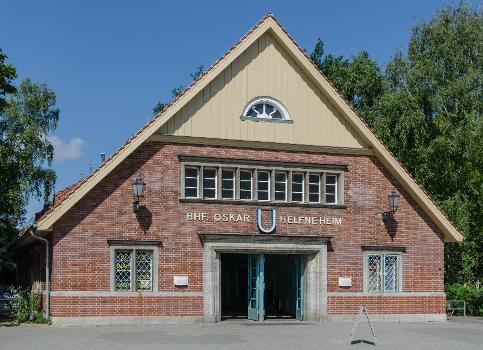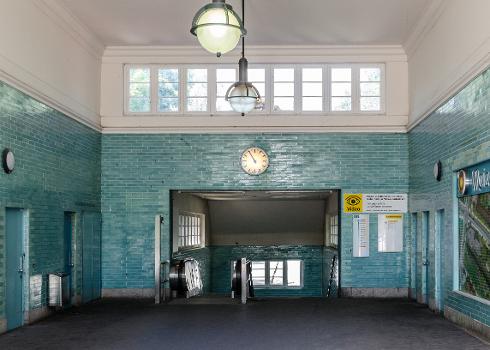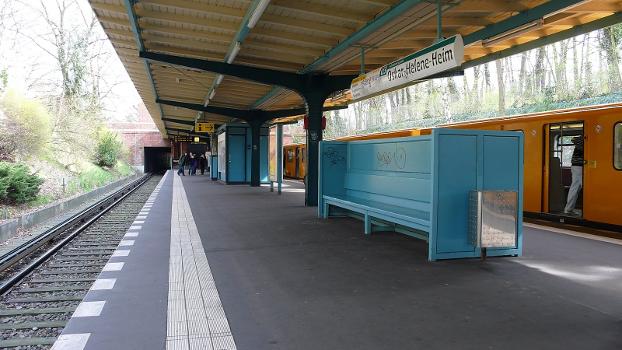General Information
| Name in local language: | U-Bahnhof Oskar-Helene-Heim |
|---|---|
| Completion: | 22 December 1929 |
| Status: | in use |
Project Type
| Function / usage: |
Grade-level metro or light rail station |
|---|---|
| Material: |
Steel structure |
| Structure: |
Horizontal cantilever structure |
Location
| Location: |
Berlin-Zehlendorf, Steglitz-Zehlendorf, Berlin, Germany |
|---|---|
| Address: | Clayallee |
| Part of: | |
| Coordinates: | 52° 27' 1" N 13° 16' 10.99" E |
Technical Information
Dimensions
| number of tracks | 2 |
Materials
| columns |
steel
|
|---|---|
| girders |
steel
|
Excerpt from Wikipedia
Oskar-Helene-Heim is an U-Bahn station in Berlin, located in the southwestern Dahlem district on the U 3.
The station was inaugurated on 22 December 1929 with the last surface section of the line to Krumme Lanke station. It was named after a nearby orthopedic hospital, a foundation of Oskar Pintsch (1844–1912), son of industrialist Julius Pintsch, and his wife Helene (1857–1923). The clinic, opened in 1914, became a pioneering institution caring for people with physical disabilities and invalids of World War I. Numerous up-to-date neurosurgery techniques were developed here, as well as new methods of treating rickets with UV irradiation, based on the studies of practising doctor Kurt Huldschinsky. The facility closed in 2000.
Today Oskar-Helene-Heim is the closest U-Bahn station to the United States Consulate, part of the former US Army headquarters in West Berlin, which is located nearby on Clayallee The Allied Museum, documenting the local history of the Western Allies in the Cold War era, is nearby.
Text imported from Wikipedia article "Oskar-Helene-Heim (Berlin U-Bahn)" and modified on July 23, 2019 according to the CC-BY-SA 4.0 International license.
Participants
Relevant Web Sites
- About this
data sheet - Structure-ID
20025522 - Published on:
05/12/2006 - Last updated on:
29/01/2022







